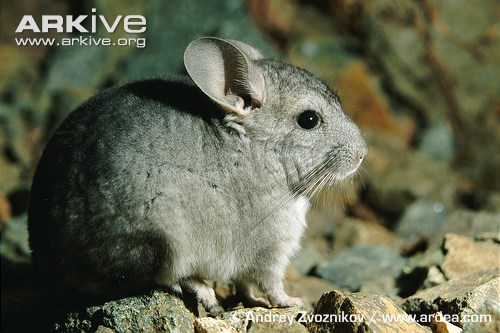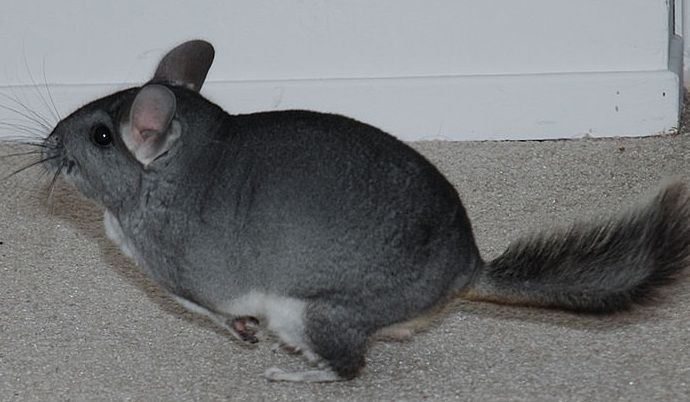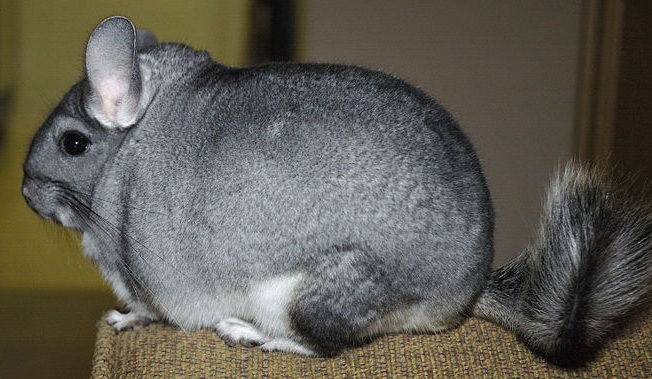The Red List | Long-Tailed Chinchilla



Do you know these facts?
The Long-Tailed Chinchillas hunted and captured ruthlessly in the wild in the late 19th century and early 20th century. At lest 30 million Chinchillas were hunted during this period. 2 million pelts were exported between 1895 and 1900. In 1905 alone, 217,836 pelts were imported into the United States from South America.
Due to uncountable hunting and demand in the market, the Long-Tailed Chinchillas was once believed to be extinct from the wild. But in 1975, the species was rediscovered in Chile.
The Chinchilla fur is considered the softest and the densest fur in the world. Chinchillas have upto than 60 hairs from a single follicle compared to just one hair in a human follicle. Every square cm of the Chinchilla’s skin contains more than 20,000 hairs. It's so dense that it can in fact repel water and so finer that a single hair is almost invisible to naked human eyes.
The highest quality fur became the curse for the Long-Tailed Chinchillas. It takes about 250 chinchillas to make one fur coat.
A wild chinchilla coat sold for $49,000 in Japan in 1981. During the period of high demand and rarity, a single pelt in fact cost upto $100,000 in the market.
The Long-Tailed Chinchillas are also considered as one of the most costliest pets.
The domesticated Chinchillas' fur is considered to be superior than the wild ones now a days. This is has reduced the hunting of the species in the wild.
Compared to other rodents, the Chinchillas can live longer, upto 20 years.
The female Long-Tailed Chinchillas are much bigger than the males.
The Long-Tailed Chinchillas have many other popular names like Chilean Chinchillas, Coastal Chinchillas, Common Chinchillas, Lesser Chinchillas, etc.
Chinchillas have no parasites and no perceptible body odor making them very clean animals. But they are very sensitive to high temperatures, and may suffer severely from heat stress.
The Long-Tailed Chinchilla is one of the two rodent species under the genus Chinchilla.
The Scientific Name : Chinchilla lanigera
The word Chinchilla means “little Chincha”, named after the Chincha people from the native Andes mountain range and “lanigera” means “having a woolen coat”
Where is it found?
Just a century ago the the Long-Tailed Chinchilla was found in millions in the Andes and adjacent mountain range of South America. But currently very few Chinchilla survive in the wild. It is believed that almost 90% of their population declined withing just three generations of the species (~15 years). Currently the species is restricted only to the Andes mountain range of northern Chile in small fragmented colonies. The long-tailed Chinchilla prefers high altitude (3000-5000 meter) barren and arid lands. It makes individual shelter in the holes and crevices in the rocks of the mountains.
How does it live?
The long-tailed Chinchillas are social animals. They live in colonies in burrows and tunnels on the rocky terrain. A big colony can have upto 100 individuals. The Chinchillas are nocturnal in nature, activity increasing during dusk and dawn. They are considered omnivorous, but the diet mainly consists of seeds, grass and other vegetation. Sometimes their diet consist of small bird eggs and insects. The female Long-Tailed Chinchillas are generally monogamous, while the males are not. They do have a gestation period of 108-125 days, very long compared to other small mammal. But this results in well developed babies, with full fur, eyes opened and a full set of teeth. The babies need least parental care and can become independent within just 6 weeks of time. The female normally gives birth to 2-6 litters at a time. In wild the long-tailed Chinchilla can live around 10 years, while in activity it can live upto 20 years.
How does it look?
The long-tailed Chinchilla is considered very pretty animal, that’s it’s so popular in the pet market. It broad head, large ears and large black eyes. The body is covered with the softest and densest fur to counter the high altitude barren climate it habitats. The tail measure almost one third of the size of the body. The hind legs are long and strong. While eating it stands on teh hind legs and grab the food with the fore legs. The general color of upper parts is bluish or silvery gray; the underparts are yellowish-white. In size it is equivalent to common rabbits (around 10 25 cm in of body length), but the females are much bigger than the males. The female can grow upto 800 grams while the males barely reach 500 grams.
What are the threats?
Hunting was the greatest threat for the long-tailed Chinchillas in late 19th and 20th century. Their fur and cute look were curse to their existence. In late 20th centuries proper measures were taken to prevent hunting and protect the remaining wild populations. But in recent years, though hunting has reduced, it has suffered due to habitat destruction by the burning and harvesting of the shrub at lower altitudes.Also the grazing animals, increased predation by foxes have threatened the wild habitat of the Chinchillas. The low reproduction rate in the wild is making the situation more grave. Many experts now believe that the Long-tailed Chinchillas have a population that is lower than the minimum viable population size for long-term survival.
Conservation Efforts
Till 1970, there were no proper conservation efforts were put to save the Long-tailed Chinchillas from hunted and traded. It was the time when the species was believed to be extinct in wild and rediscovered again in Central Chile. Post the rediscovery, strict laws were put against poaching or trading of wild Chinchillas and also covered under CITES Appendices. But due to the high demand for pelts and pet markets, the government of Chile successfully proposed in 1994 that domesticated chinchillas and their fur not be covered by CITES Appendices. Various research on the behaviour and habitat of the species were also done. Currently many of the wild populations are protested in fenced reserves, like the Reserva Nacional Las Chinchillas. The species is bred successfully in captivity, but the reintroduction of the captive individuals into wild have not been successful. The species has reached an red alarming level of population and reintroduction and human interventions are necessary to save it in the wild. The recent conservation efforts focus on increasing the area and quality of the Chinchilla habitat and also educating the local communities.
The Long-Tailed Chinchilla
1 Comments For This Post
1 Trackbacks For This Post
-
Top 10 Interesting Chinchilla Facts That Are Not For Sale - Tenfact Says:
November 24th, 2016 at 10:05 am[…] and 1900. In 1905 alone,In fact 2 million pelts were exported between 1895 and 1900. In 1905 alone, 217,836 pelts were imported into the United States from South America.Because the Chinchilla was so prized for its soft and luxurious fur, they were […]
Leave a Reply
MOST CONCERNED ENDANGERED SPECIES
- Kashmir Stag (Hangul) - 229 votes
- Iberian Lynx - 154 votes
- Great Indian Bustard - 150 votes
- Long-Tailed Chinchilla - 138 votes
- Greater One Horned Rhino - 100 votes
- Orange-bellied Parrot - 95 votes
- Snow Leopard - 92 votes
- Red Panda - 82 votes
- Mekong Giant Catfish - 82 votes
- Tiger - 63 votes
-
CATEGORIES
- Amphibian (1)
- Bird (2)
- Conservation (10)
- Environment (4)
- Featured (5)
- Fish (2)
- Heavens on Earth (2)
- Mammal (11)
- Nature's Facts (8)
- Nature's Wonders (9)
- News (13)
- Red List of Endangered Species (18)
- Reptile (2)
- Wildlife (4)
-
ARCHIVES
- January 2013 (2)
- December 2012 (1)
- July 2012 (1)
- June 2012 (13)
- May 2012 (20)
- April 2012 (15)
- March 2012 (1)
- December 2011 (1)
- November 2011 (1)
- October 2011 (1)
- June 2011 (1)
- May 2011 (2)
- April 2011 (2)
- February 2011 (2)
- January 2011 (5)
- December 2010 (2)
- November 2010 (1)
- October 2010 (1)
- April 2010 (1)



 (138 votes, average: 1.00 out of 1)
(138 votes, average: 1.00 out of 1)
October 26th, 2015 at 7:07 pm
I was just wondering if you mentioned the chinchillas predators…